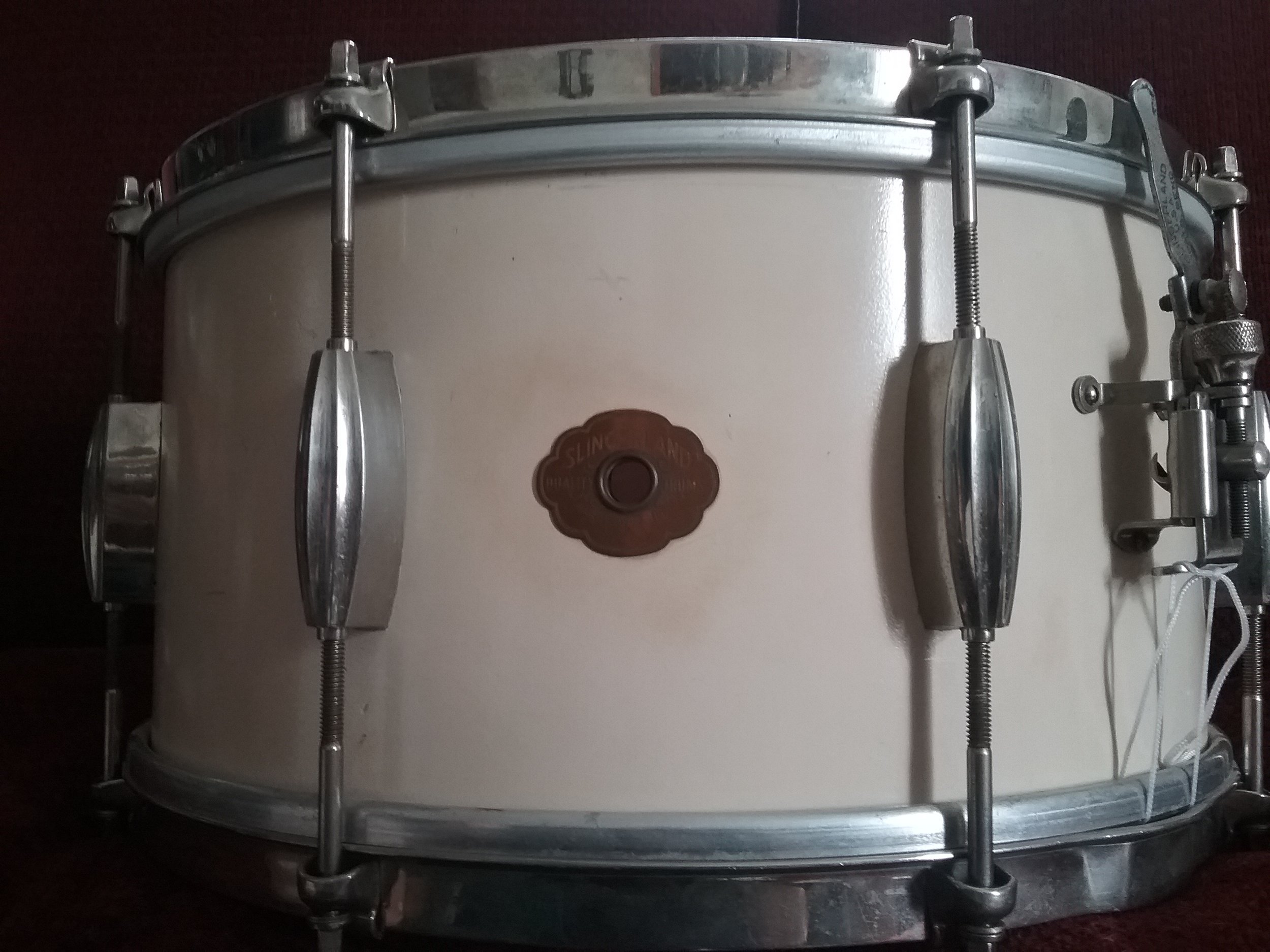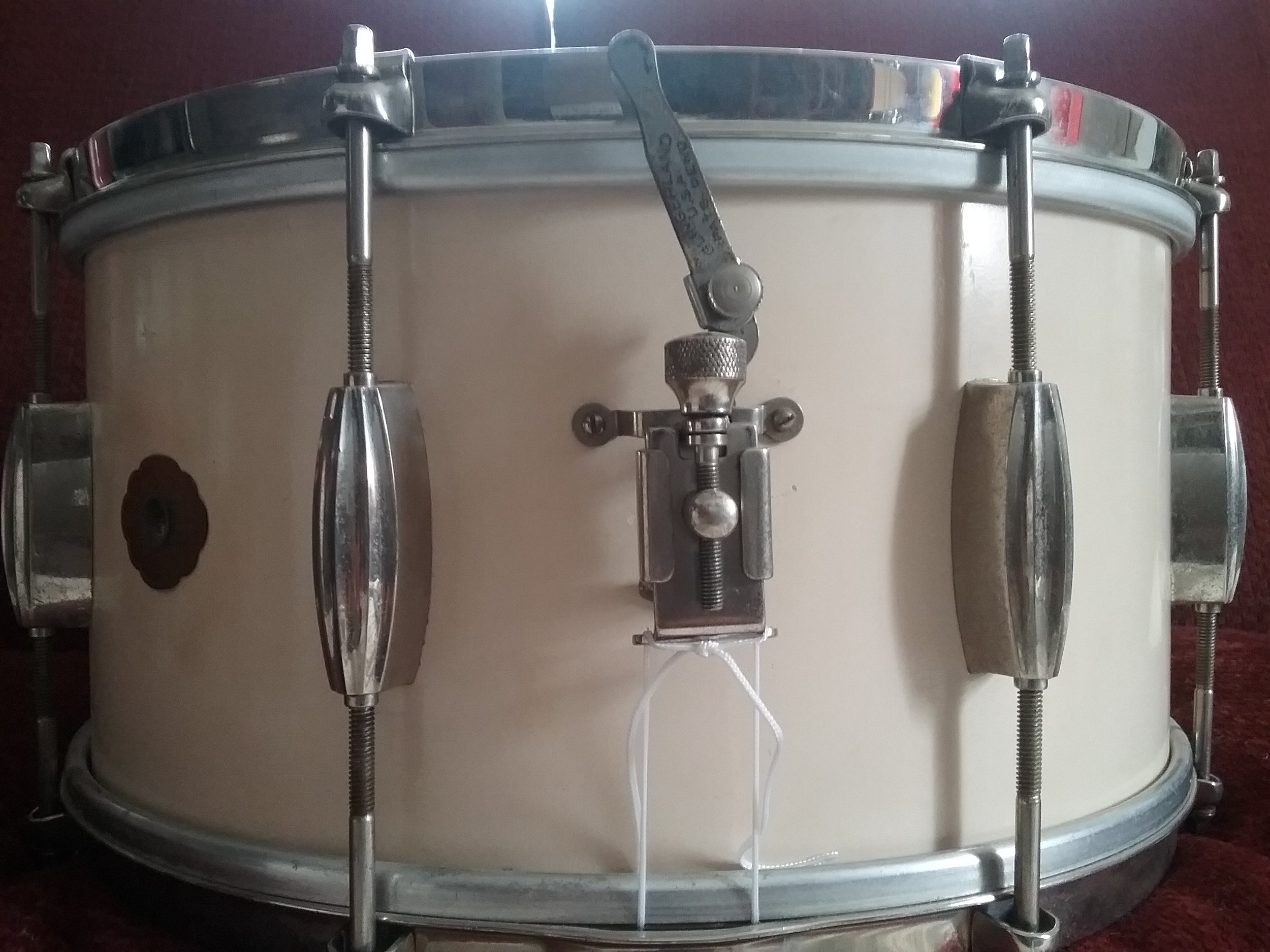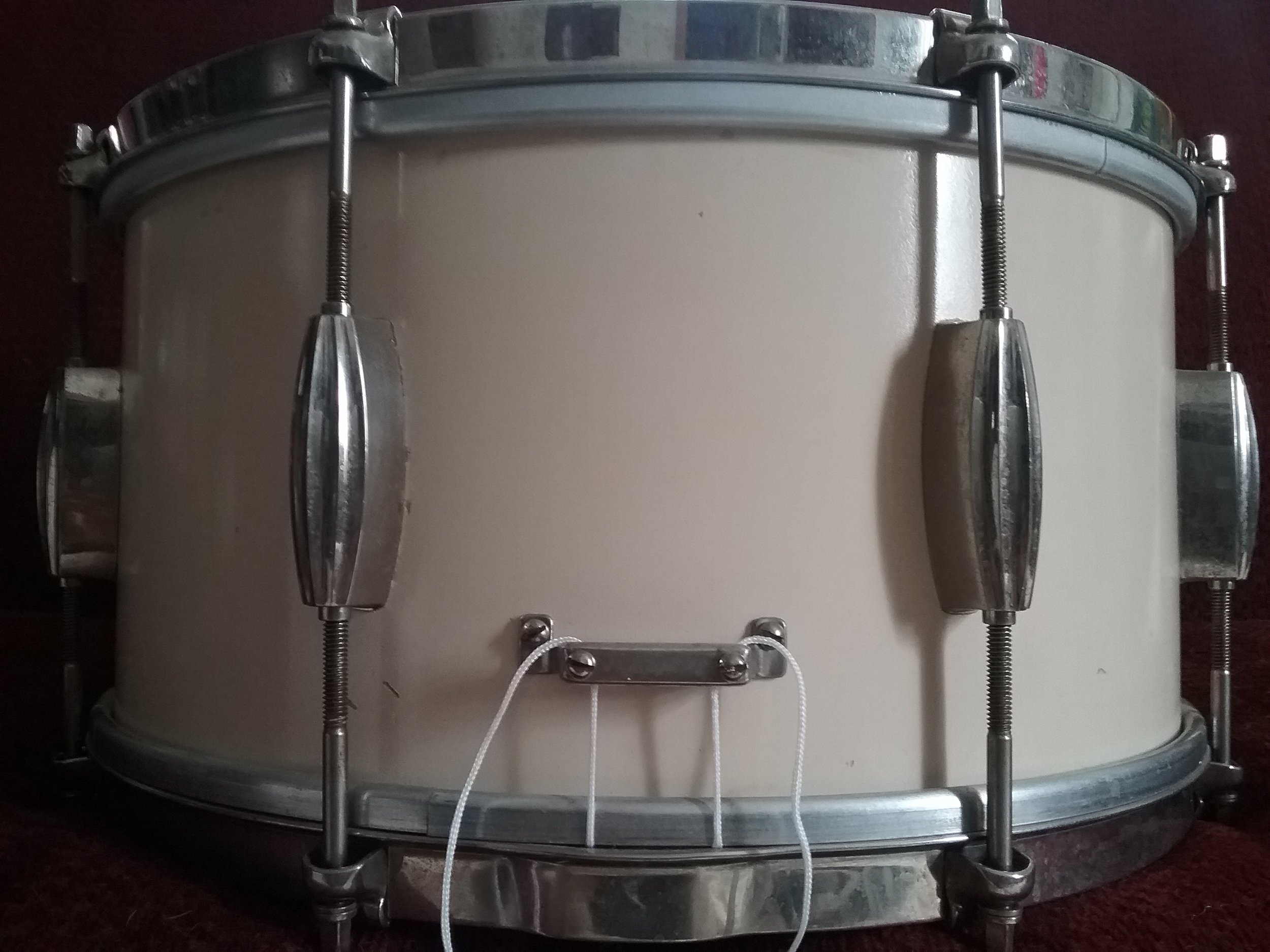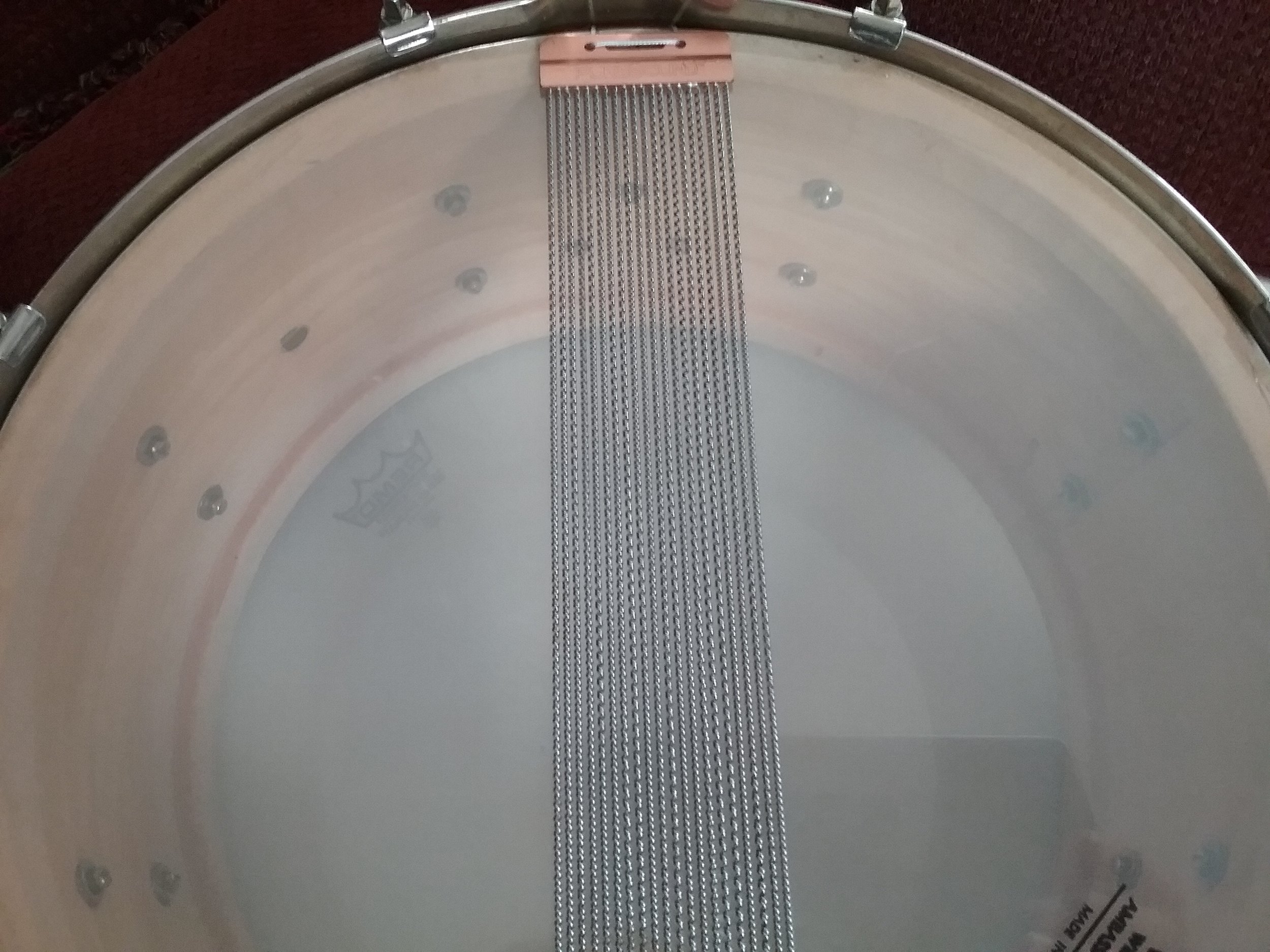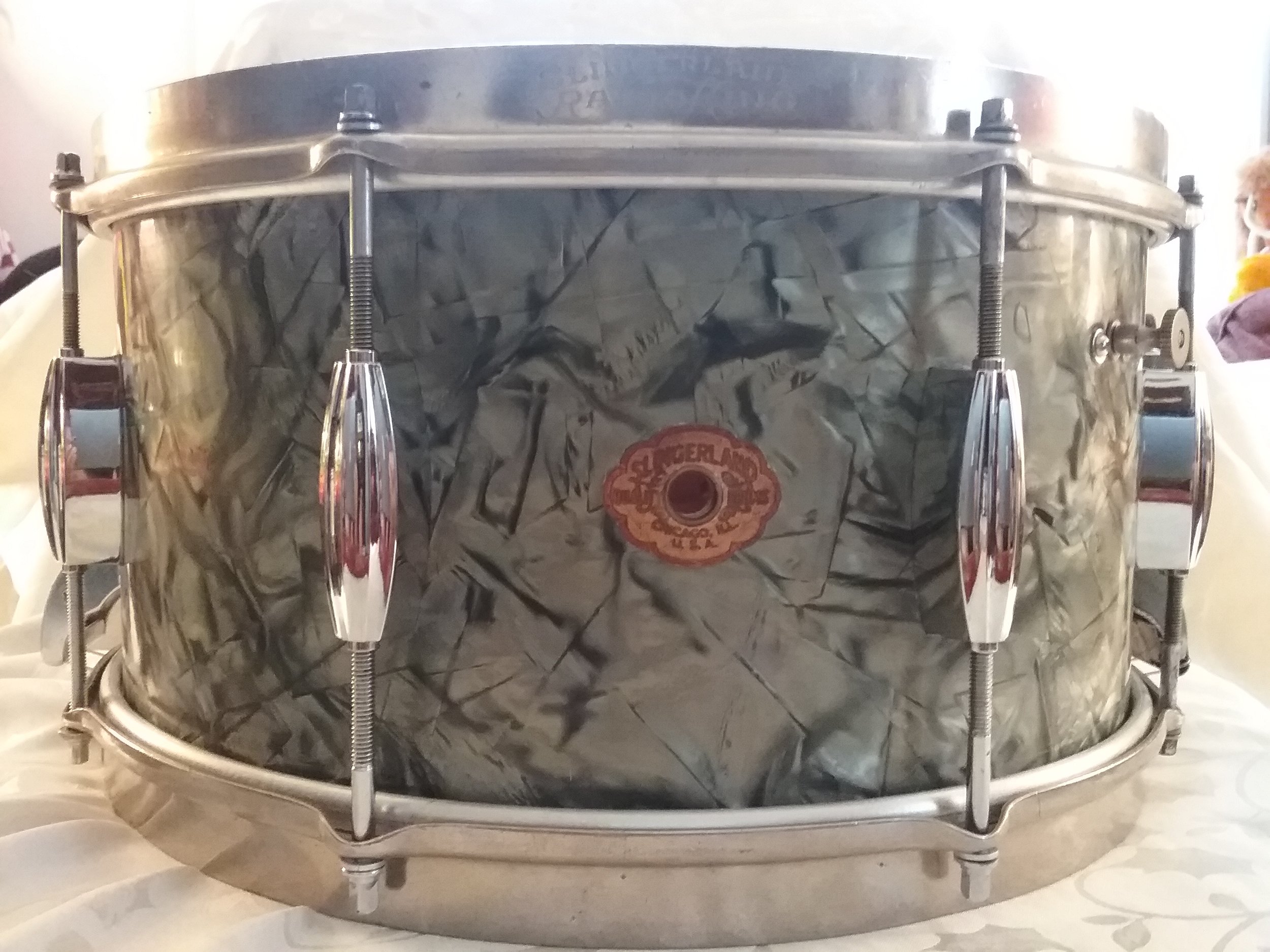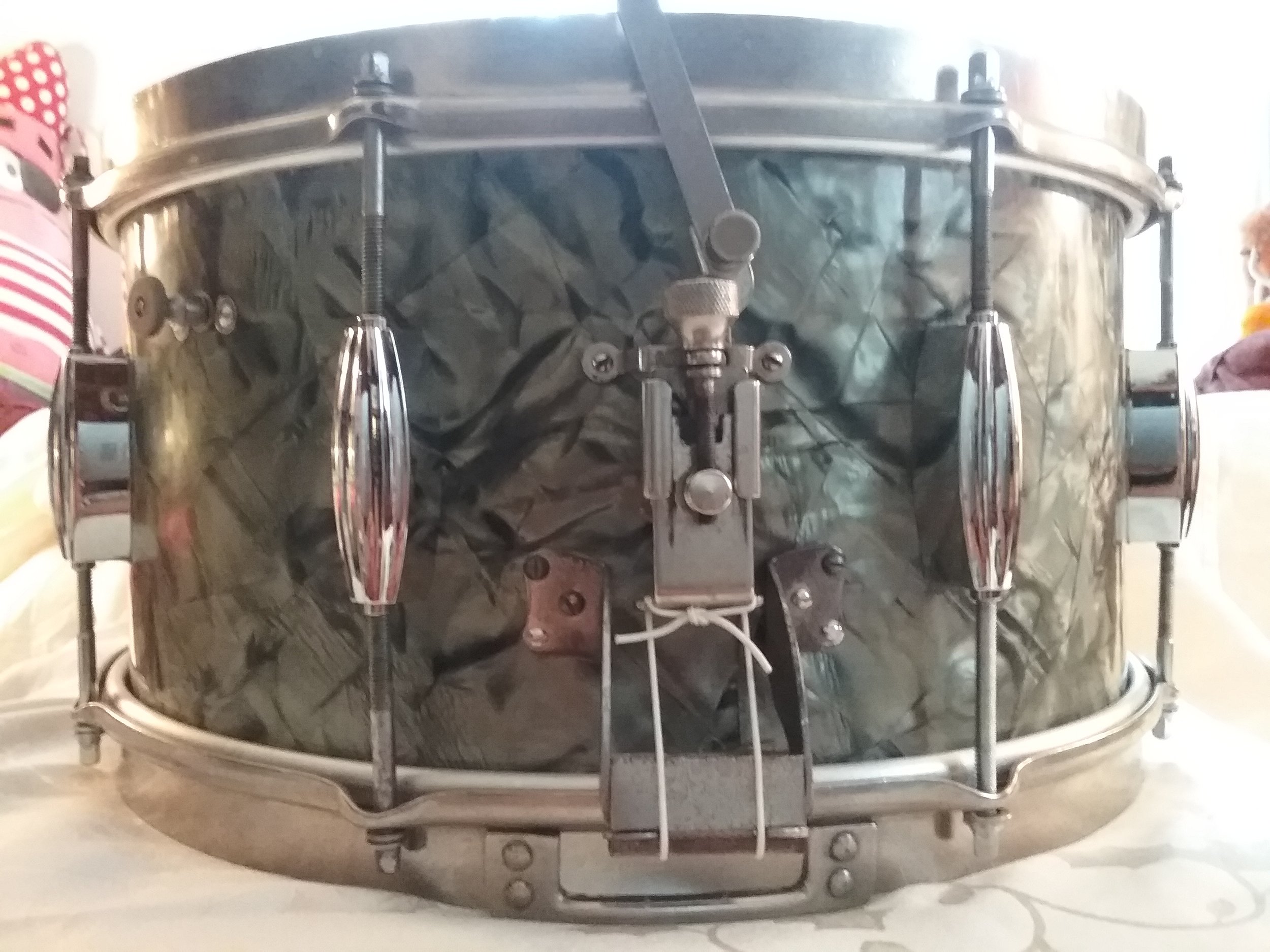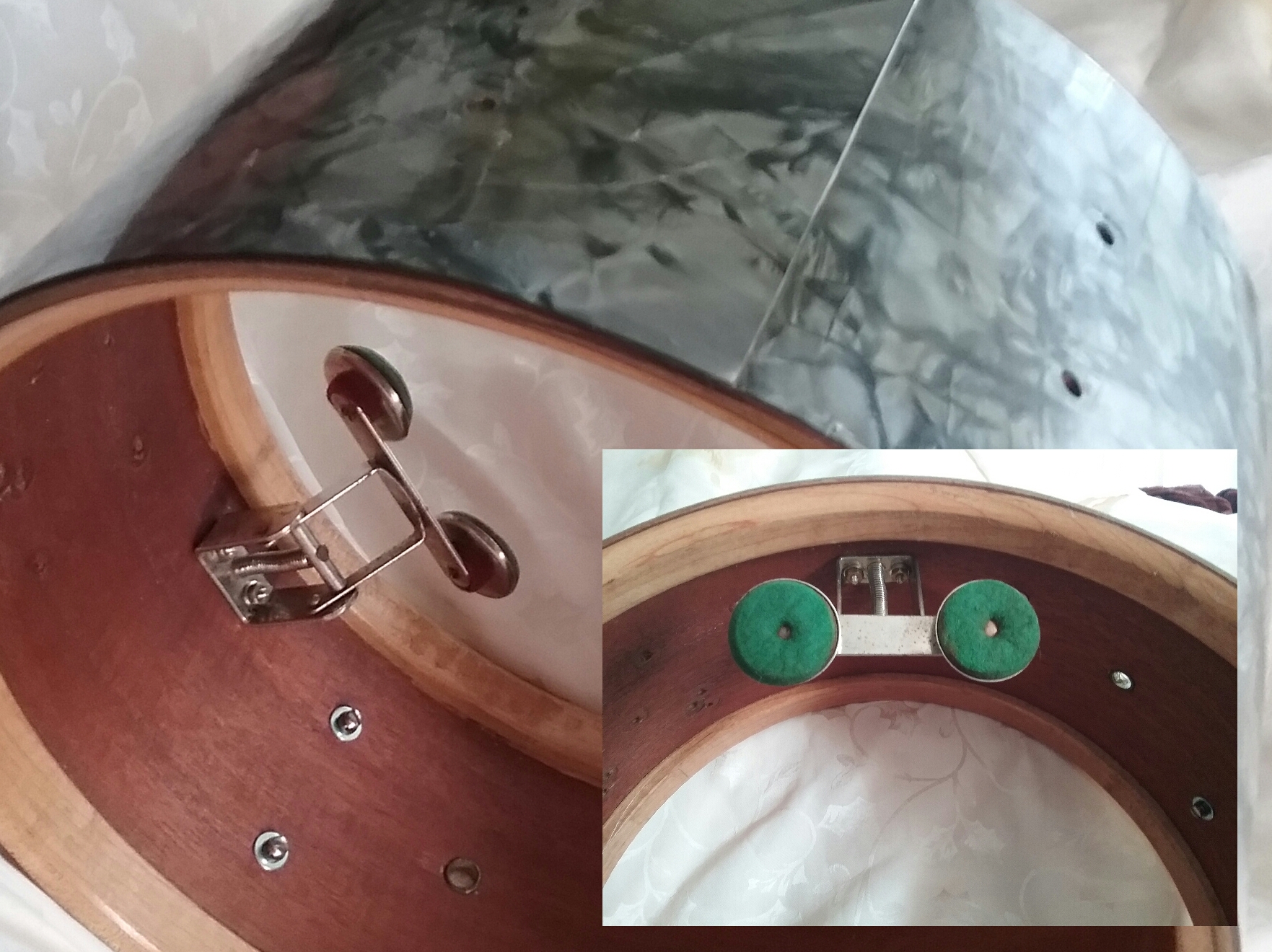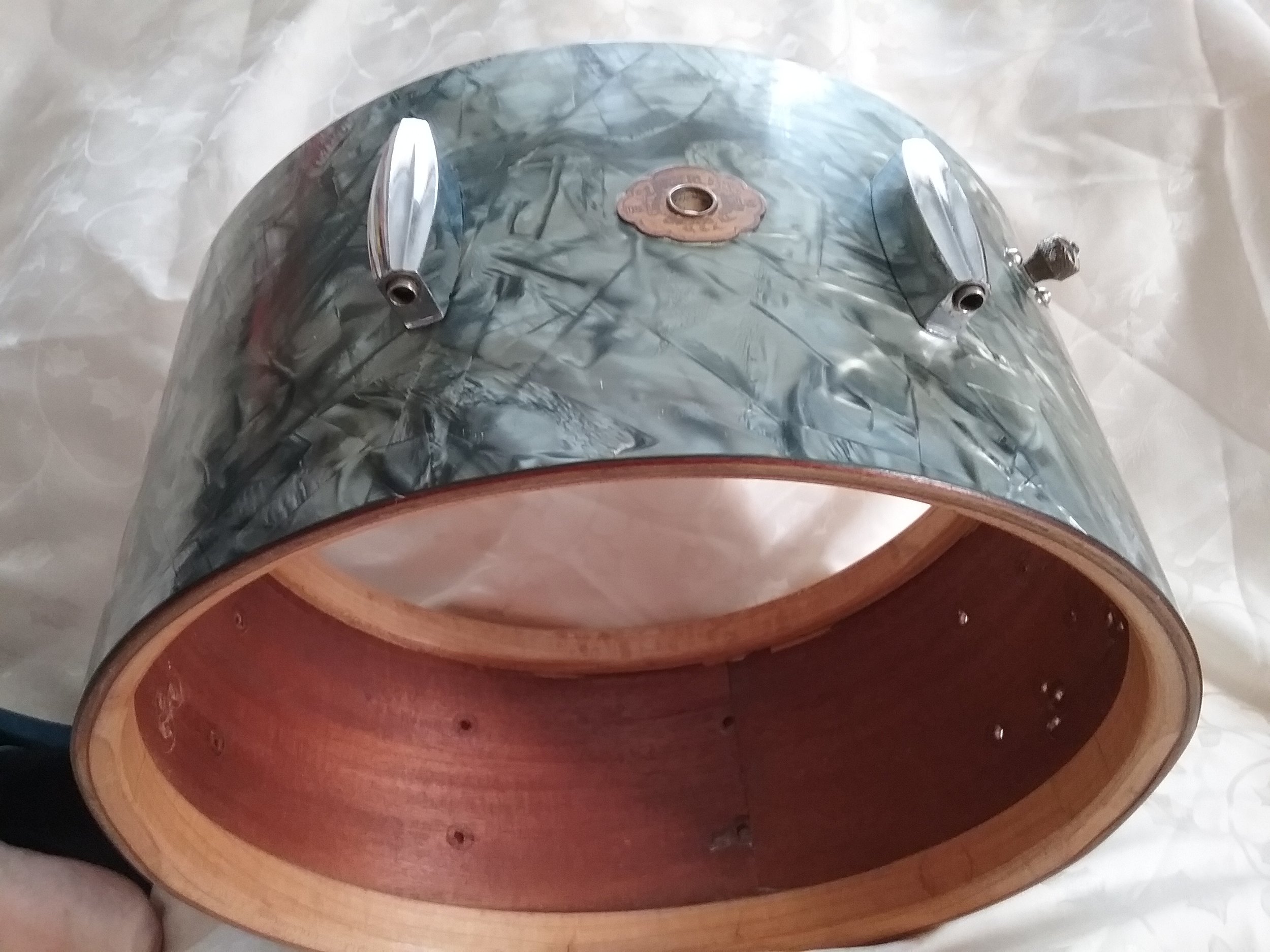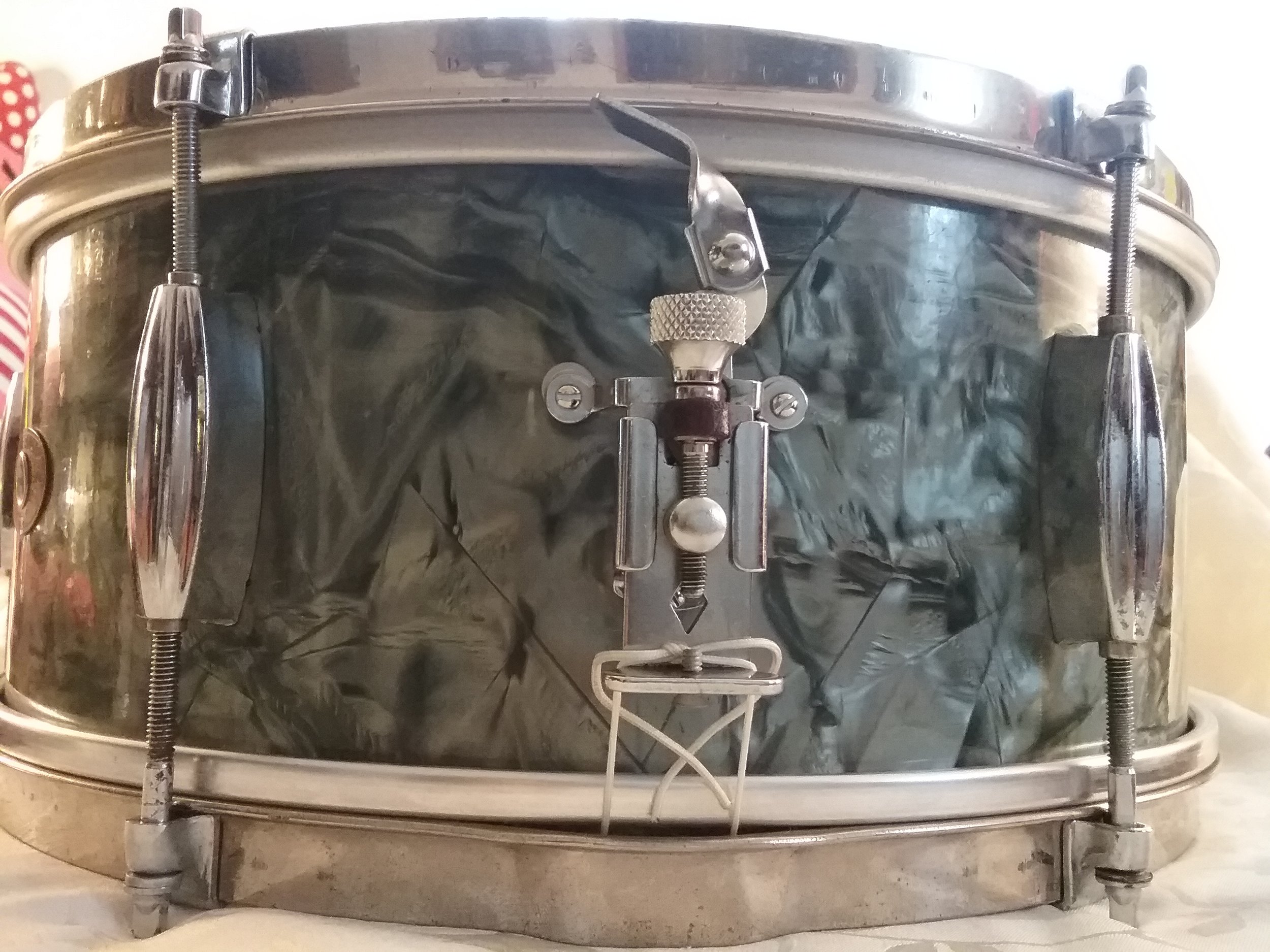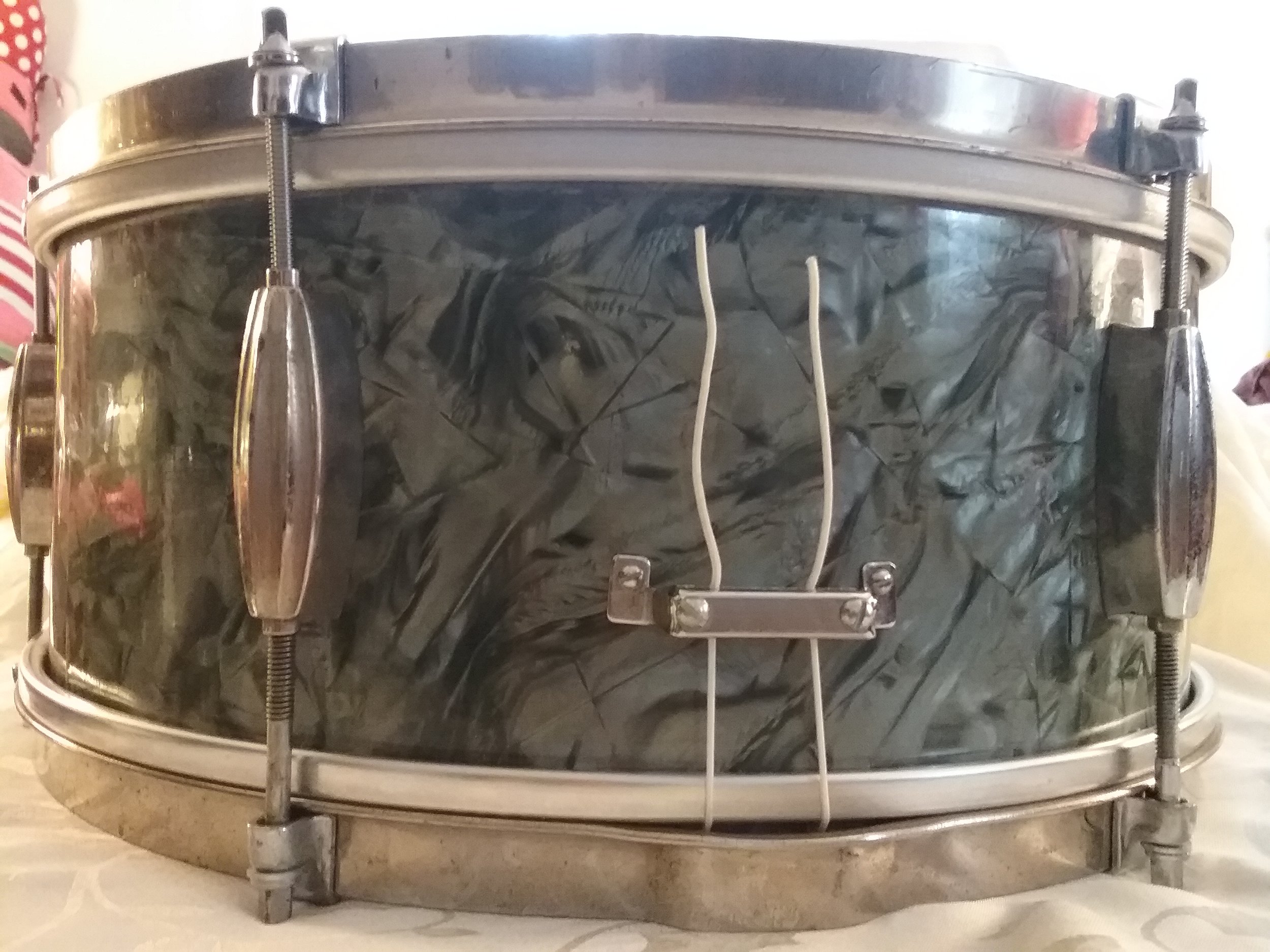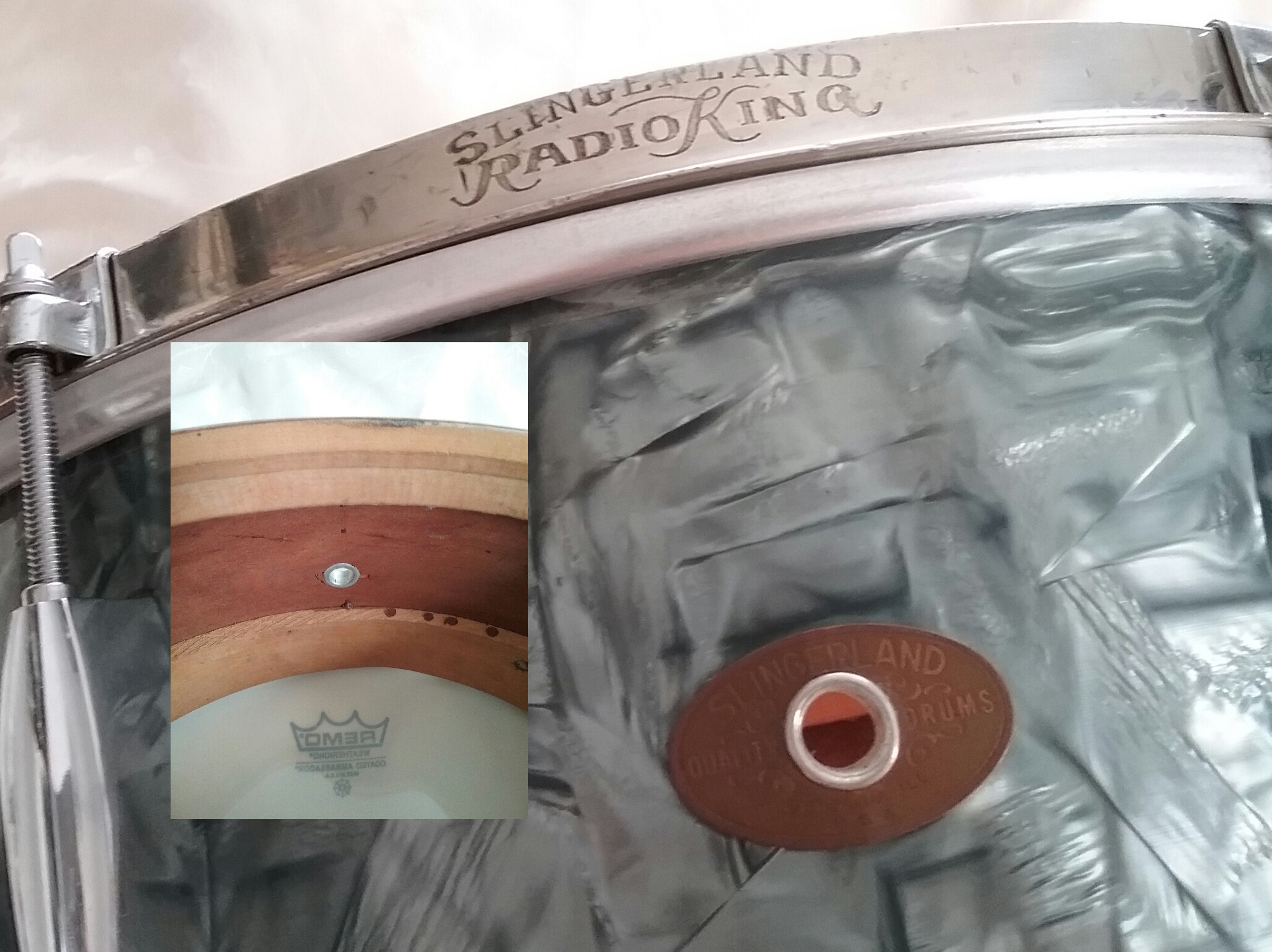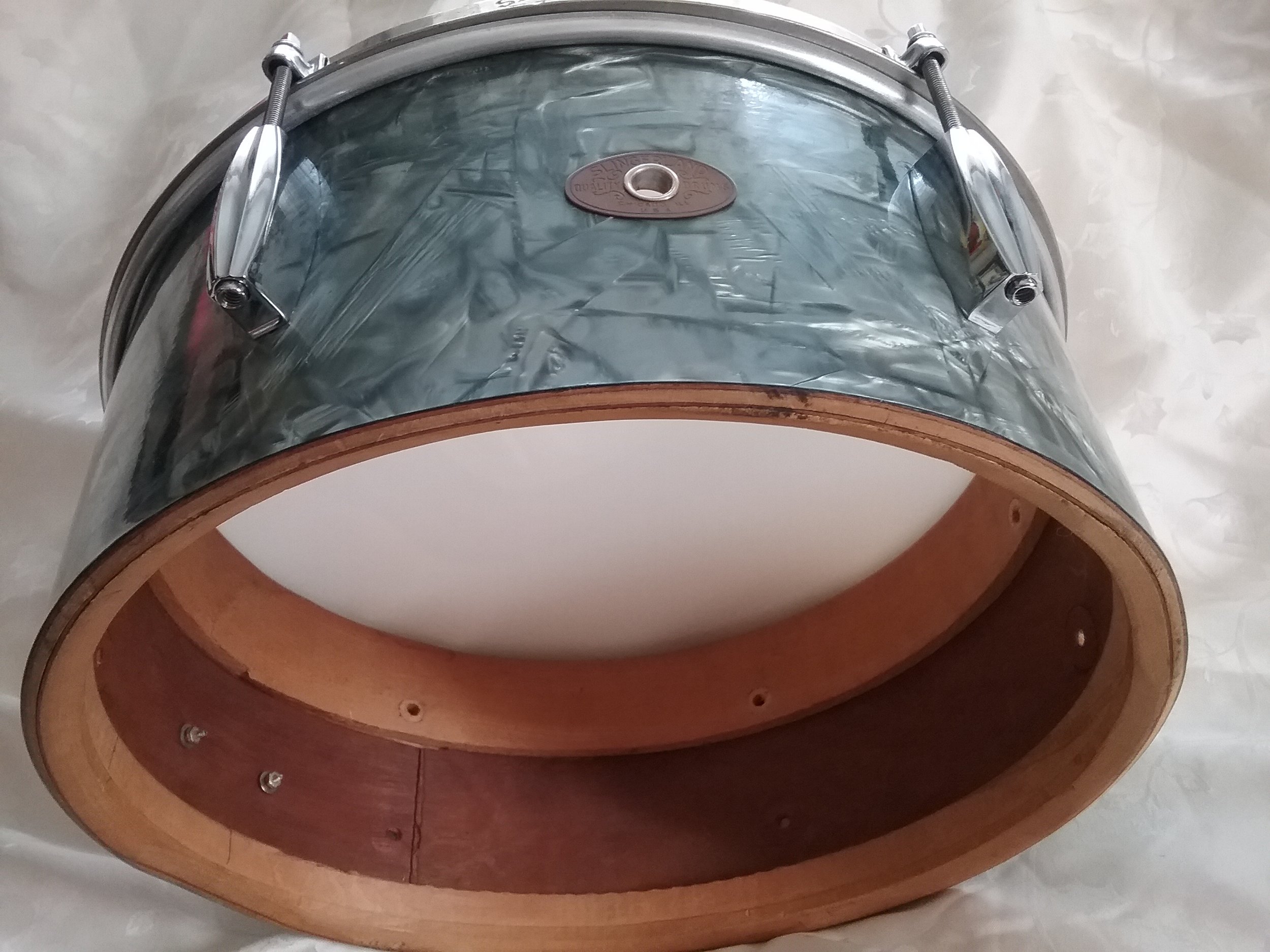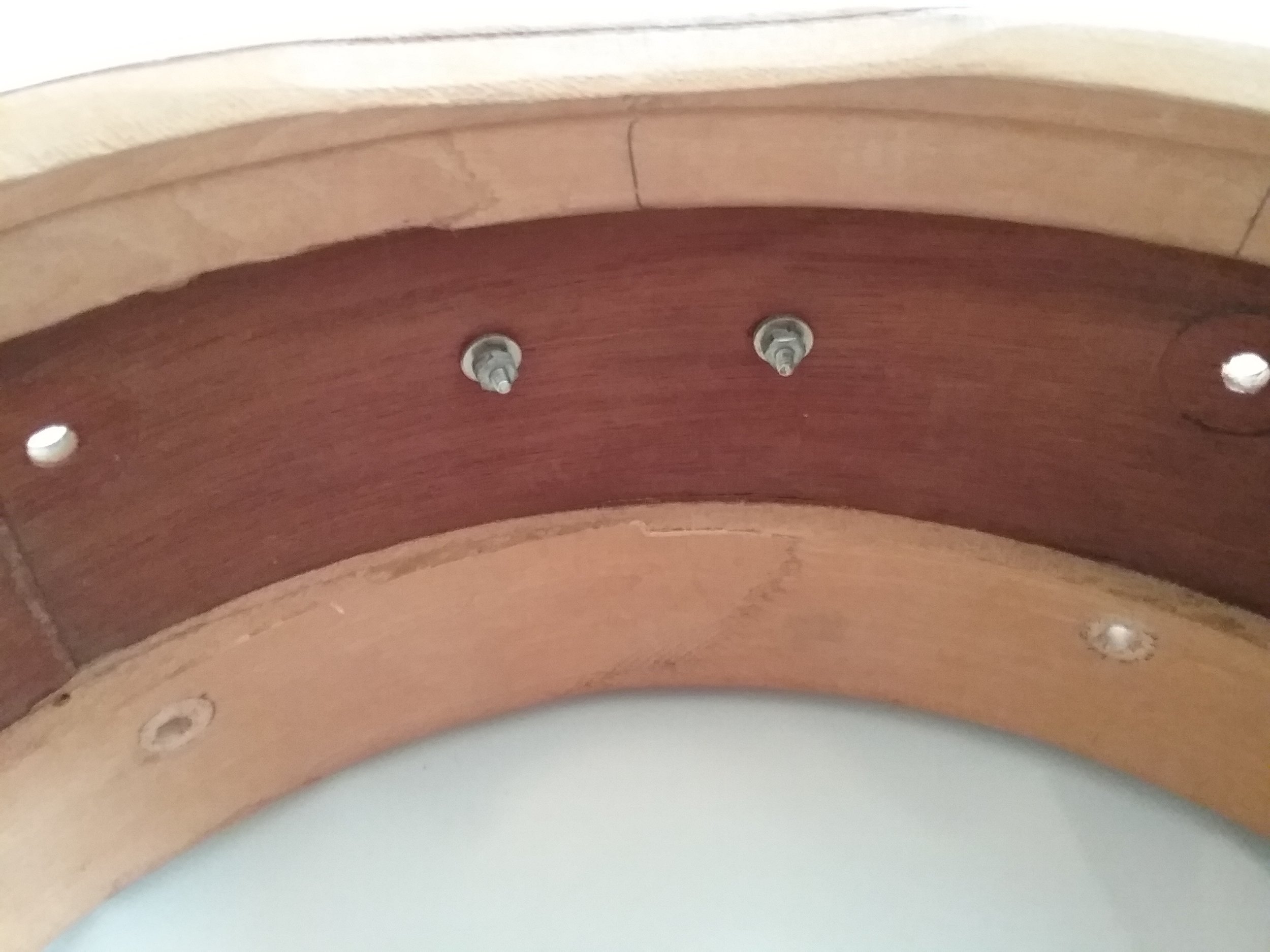"To Be Or Not To Be?"
As technology progresses in the automotive industry, we find ourselves in a “hybrid age”. Gasoline and electric power are merged to create these creatures. Drums may experience production changes that really are not planned, just improvised, and the product is no longer the original design but a "hybrid". The Slingerland Drum Company produced some interesting examples of what I call vintage snare drum hybrids. The late 1930s through the 1950s were remarkable times for Slingerland because they were in their heyday – producing the most popular drums in America. Orders and production were at a fever pitch. Slingerland’s factory workers were rolling out drum products twenty-four seven. At times, some stock of drum shells or parts would become depleted and they had to improvise and come up with a creative solution. A great example of this can be found in the building of the Radio King drum line. Slingerland’s policy was to use up every single part or shell. This practice contributed to the creation of these hybrid drums.
In my early days of collecting, I often asked myself, “What is this model?” or “Why is this snare drum made like this and inconsistent with similar drums of this era?”, or “Why is this snare drum different than the one in the catalog?” As I grew more familiar with Slingerland drum catalogs and references, I became a vintage Slingerland drum detective of sorts. I learned to read between the lines of the typical and not so typical examples. I discovered that these hybrids came into existence because of the supply and demand issues at the factory.
There are sub-categories such as “rare” and “ultra-rare” drums. Also there are snare drum model exceptions like the Professional Model offered in the 40s catalog. These drums were assembled using Radio King Drum parts - streamline lugs and the professional three point strainer. So, these were not what I consider hybrids. There are other hybrid drums, drum set components and floor toms that I put in a separate category. These are significant exceptions to all rules or catalogs.
There are quite a few examples out there in the vintage drum world for discussion. Here are my three examples of Slingerland snare drum hybrids.
This first example is this 1940s, 7”x14” Radio King Student model snare drum. This model was designed as a three ply shell along with the choice of duco lacquer finish, solid lacquer or sparkling pearls. This one is finished in solid white. On the production line, if the stock of three ply shells was depleted, then a single ply steam bent shell was substituted. Back then, it was an upgrade, but probably not a significant one to Slingerland. The customer didn’t know the difference at the time because the construction of shells was not advertised. Also, these shells most likely would have been pre-drilled for streamline lugs for quick assembly for the Radio King drum line. The factory drum builder would then drill for the remaining hardware; streamline lugs, a three point strainer, number 967, a simple butt plate, two single flanged rims, 16 clips and tension rods.
My second hybrid example is a 1938, 6.5"x14" Gene Krupa Radio King model in black diamond pearl. If the factory worker went over to the solid maple shell stock and found it was depleted, the only option for that day’s order was a three ply shell that was available. That is probably what happened with this drum. The hardware used was the No.967, three point strainer, eight streamline lugs, two full flanged hoops, two extension bridges and sixteen tension rods, and a dual muffler. At the time a drummer was not very concerned with the difference between three ply and one ply maple shells.
There is an age old argument about what a "true" Radio King is. Slingerland used different shells and hardware for Radio Kings over the years. The consensus among vintage collectors is that the ones with the snare wire, extended bridges and one ply shells are the most desirable because they sound best.
Many 8"x14" models such as the Bernie Mattison model were only made using a three ply shell according to the Slingerland catalog. These were built utilizing the same drum components as the Gene Krupa models, although it is likely that one or more of these probably exists today that was made with the one ply maple shell.
Slingerland made Radio King models with both types of shells because they needed to fill their orders at a fast pace. The main objective was to complete the orders for the day.
This third example is an early 50s, 5.5"x14" Student Model Radio King in black diamond pearl. This is one of the most interesting and unusual Slingerland hybrids that I have encountered because the shell is not an actual snare shell. The drum builder had an even bigger challenge when both the three ply and one ply shell stock was completely depleted. The clever solution? - take a 12"x14" tom tom shell and cut it down to size. The indication of it on this drum is the three inch maple reinforcement hoop installed on the batter side. Notice the shorter snare side reinforcement hoop and the snare bed cut into it. Also notice the lug mounting hole drilled into the larger reinforcement ring. The 12"x14" shell cut in half may have been used to make two snare drums. Another explanation for the use of the larger reinforcement ring could be they ran out of small reinforcement hoops and had to substitute a larger reinforcement hoop that normally was used on larger tom toms.
Also, this snare was built using only six streamline lugs. That particular day in the factory, lugs may have been rationed due to stock depletion, or the tom shell had already been drilled for six lugs. The hardware is a Number 967, three point strainer and simple butt plate, single flanged hoops along with twelve clips and tension rods.
Slingerland hybrids are very uncommon. High demand meant quick solutions and substitutions. The Slingerland drum company was constantly working to fill the orders for the day. Their drum builders’ improvising skills and techniques satisfied the drum customer awaiting his order. Extraordinary times called for extraordinary solutions. These drums would later be discovered by collectors as rare hybrids made during a golden era of drum manufacturing.
Snare drum hybrids are easily overlooked. The next time you are in a vintage drum buying mode, take another look see, and check for these anomalies. These drums are still out there, hidden away and just waiting to be found. You may just find yourself discovering a hidden treasure of vintage drum history.




